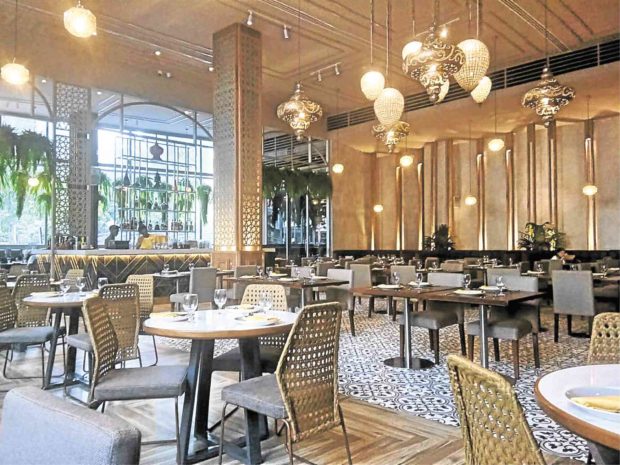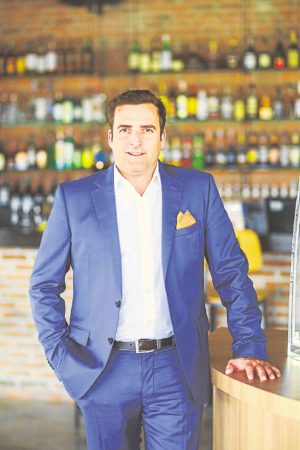Adventurous and purist.
These are the two types of Filipino diners which international restaurant chain Mango Tree wants to cater to as it reopens its flagship store in Bonifacio Global City, featuring new menu offerings and a completely new look.
The adventurous ones, says Trevor MacKenzie, Mango Tree’s global managing director, are their younger customers, which the company had in mind when they redid the restaurant’s interiors and menu.
“In the course of our eight years in Manila, we’ve seen a big, big change. Now people are understanding more gastronomy, they understand tasting menus. I see this all driven by the younger generation, who for a lack of a better word, want something ‘Instagram-able’—something that looks good and tastes good,” MacKenzie says.
Some of these new dishes include Watermelon Salad with Dried Shrimp Floss (Tangmo Goong Haeng), which, according to MacKenzie, was served in the royal palaces of Thailand as a refreshing palate cleanser; Green Mango Salad “Isan Style” (Tum Mamuang), an imported Thai green mango salad from the northeastern region with bird eye chili, shallots and crushed peanut sesame brittle; Northern Thai Style Curry Stew with Kurobuta Pork Belly (Gaeng Hung Lay Moo Sam Chun), a Chiang Mai style aromatic curry with slow roasted pork belly and pickled garlic; and Jungle Curry Reduction with Kurobuta Pork Belly (Gaeng Pa Moo Sam Chan), a dish from Kanchanaburi that is a spicy jungle curry reduction of red curry paste, finger root, kaffir lime leaf and fresh Holy Basil tossed with slow roasted Kurobuta pork belly.
As for the interiors, Mango Tree did away with its al fresco area by turning it into a solarium section, where MacKenzie says younger customers tend to sit because they enjoy the light, airy, greenery-inspired look—plus, it’s right next to the bar.
There are now also more large tables in the restaurant, as MacKenzie says Filipinos prefer to dine in groups, such as families or friends.
Purists, on the other hand, refer to Mango Tree’s more seasoned customers—those who have been loyal diners over the past years.
MacKenzie says they’ve made sure to keep this loyal following by retaining menu favorites, as well as the restaurant’s “Thai holiday escape” feel.
“We know dining is not just about the food but the experience, and we are looking to stay ahead of the curve, innovate, evolve and create more and more exciting experiences for our existing and new customers,” MacKenzie says. “When we did the renovation, people were asking, why do you need to close? Your restaurant looks fine; it already looks modern. But we really wanted to set ourselves apart from other Thai restaurants, and we’ve seen a lot of competition come in.”
While MacKenzie, last year, discussed expansion plans for Mango Tree here in the Philippines, he says they have since decided to focus their investments on the redesign of their restaurants, which would better cater to the needs of their customers.
Following the revamp of Mango Tree in Manila, the company’s flagship outlet in Hong Kong will be the next location to the refreshed.
Globally, Mango Tree’s parent company, Mango Tree Worldwide, successfully opened 12 new restaurants this year. It now operates around 70 dining outlets in 14 countries under a series of brands which specialize in authentic Thai and Southeast Asian cuisine. These brands include Mango Tree, Mango Tree Bistro, Mango Tree Cafe and Coca.
The group’s heritage dates back to 1957, when Khun Srichai Phanphensophon opened the first Coca restaurant in Surawong. In 1994, Srichai’s son, the group’s CEO Pitaya Phanphensophon, opened the first Mango Tree in Silom.



